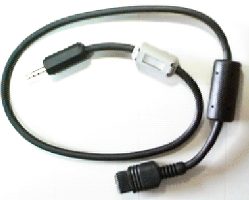Introduction of
LXDC by Itoh-san
[Japanese]
[English]
As I stated here, LXDC is a
software by Eiichiroh Itoh to
make your palmtop PC HP200LX a replacement for the "memory card
holder" which can transfer data from DC-20/ES-1000 and store it on
flash cards.
The public
distribution of this software is recently started on this page
(written in Japanese).
Summary of LXDC
Basic usage of LXDC is as follows:
- Connect LX to DC/ES, set LXDC to camera mode, and transfer data
from DC/ES to LX.
- Turn LXDC to local mode to save images to separate files if needed.
- Connect LX to PC/Mac, run driver software for DC/ES on it, set LXDC
to server mode to transfer images from LX to PC/Mac.
In addition, LXDC can convert images to CMT format which is supported
in software that comes with ES-1000. This method looks like:
- Connect LX to DC/ES, set LXDC to camera mode, and transfer data
from DC/ES to LX.
- Convert images to CMT files on LX, and transfer them to PC/Mac
with your favorite methods (e.g. using flash cards).
- Run driver software for ES-1000 on Windows/Mac, and read CMT files
to convert them to more common image formats.
If your PC or Mac has a PC card slot, the latter method takes less time.
DC-20 users can't utilize this method using DC-20 software as it has no
capability to read CMT files.
How to make a cable for LXDC
As you know, LX has a special serial port that doesn't directly accept
cables which come with ES-1000/DC-20. You have to make a dedicated
cable for LXDC using one of the following three methods:
1. Making a DC/ES<->LX direct connection cable

50cm direct connection cable |
This makes the most convenient cable as you can make it as short
as you want.
If you make it only several decimeters long, you can transfer images
in a cafe without being severely suspected :-). |
The problem is that the connector for the serial port of LX is hard to
find. I was so frustrated that I dared to cut the official HP F1015A
cable to obtain a connector :-). I have soldered the color cables
that I dug from F1015A to a stereo mini plug as follows:
(SG)yellow pink(RD)
| |
+---------+ V V
| +---+-+---+
| +---+-+---+
+---------+ ^
|
brown(SD)
CD, DR, RS, and CS are shorted in F1015A, but LXDC seems to run
without this short circuit.
I don't know how effective a noise filter is, but at least it makes
my cable easier to hold at the insertion or extraction :-)
2. Making DSUB 9pin male <-> stereo mini plug cable
This cable can be connected to HP F1015A (whose one end is DSUB 9pin
female and the other end is connected to LX). Parts for making it are
easy to find and inexpensive.
This method is explained in detail in the
DC-20
Analysis Diary by Itoh-san (in Japanese).
A picture of
the cable is available here.
3. Using DSUB 9pin cross adapter
In this method, all you have to do is to connect ready-made parts; no
craft required. If you have a connectivity pack, you should try this
first.
The point is to relay the cable that comes with ES/DC to F1015A; to do
this, you need a cross-connection adapter (or null-modem adapter)
whose both ends are DSUB 9pin male.
The problem of this method is that it makes a very long cable as two
cables are connected without being cut.
DSUB 9pin cross adapter is included in the connectivity pack (HP
F1021A) or the connector/adapter kit (HP F1023A) for LX. Standard
gender changers with the label "U.S. PAT: 5190481" can't be used for
this purpose as they are of straight-connection.
Please send questions and comments about this page to
hideki@teikan.net.

